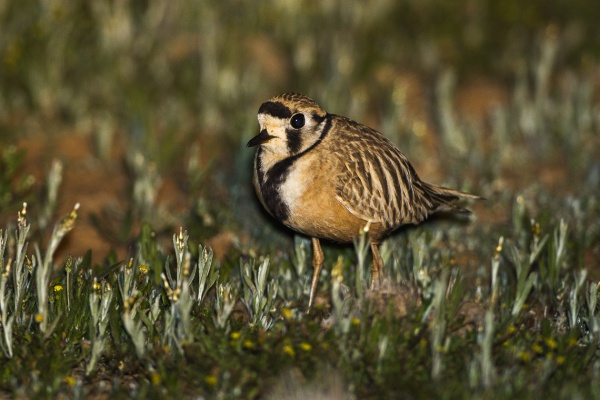Facts About Inland dotterel
The inland dotterel is a distinctive shorebird native to Australia's arid interior. These birds can be observed during the day in loose flocks across gibber plains and claypans, where they feed on shrub shoots. At night, their behavior shifts as they hunt for insects along roads. Due to its remote habitat, the inland dotterel remains somewhat enigmatic to researchers.
Ornithologist Gordon Maclean provided some of the first detailed descriptions of this bird's plumage and behavior in the 1970s. The inland dotterel is a medium-sized bird with camouflage-like plumage, distinctive black markings, and a short bill. Its classification has sparked some debate, with scientists placing it either in the genus Charadrius or the monotypic genus Peltohyas.
These birds are found scattered across the arid regions of southeastern and southwestern Australia, particularly in areas receiving less than 100mm of summer rainfall. They thrive in sparsely vegetated habitats, often covered with saltbush or samphire. Interestingly, the inland dotterel has benefited from land cleared for agriculture. They also exhibit seasonal movements and may travel beyond their usual range during extreme weather conditions.
By day, these birds flock together to feed on plant matter. At night, they venture out alone to hunt insects such as spiders, grasshoppers, and beetles. They possess specialized salt glands to excrete excess salt from the plants they consume, ensuring they stay hydrated. Inland dotterels are monogamous, with both parents sharing the responsibility of caring for their offspring. However, they face threats from predators such as foxes and birds of prey and can also host parasitic lice.
According to the IUCN, the inland dotterel is not currently at risk and is classified as "Least Concern." However, the Victorian government lists it as vulnerable on their advisory list of threatened vertebrate fauna. Despite this designation, the population is thought to be relatively large and stable.
